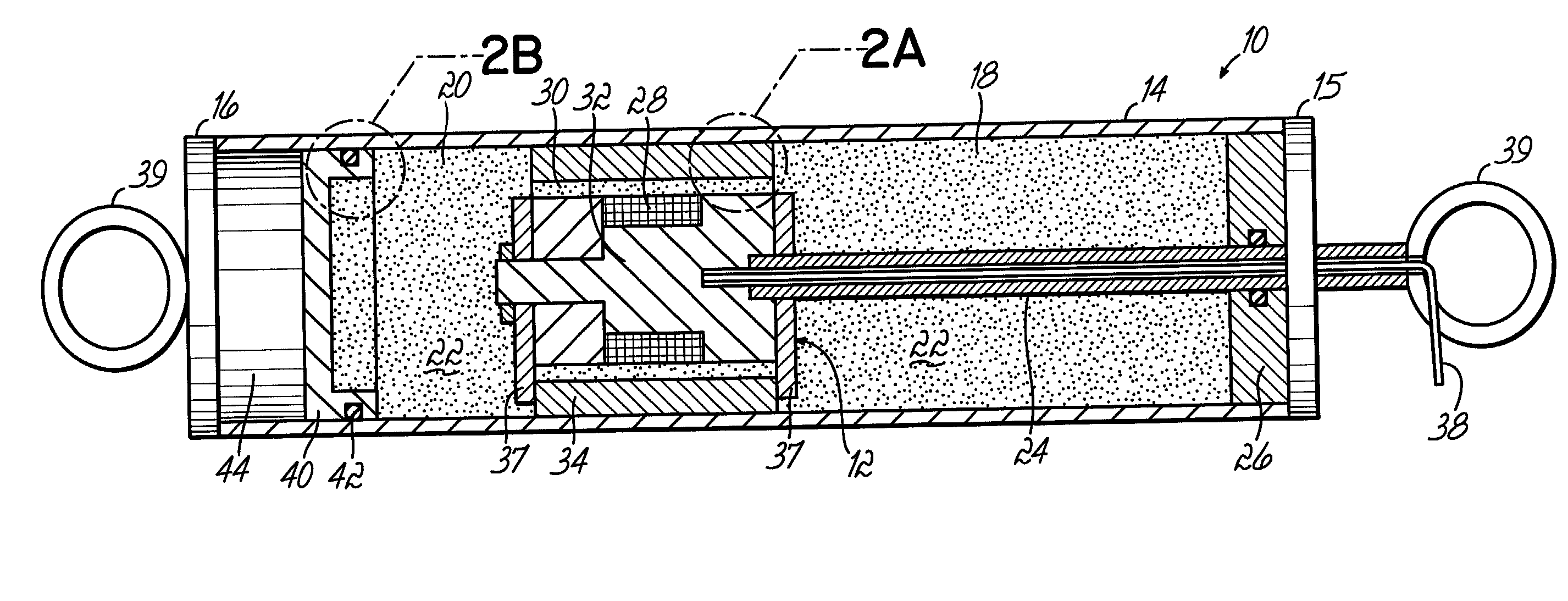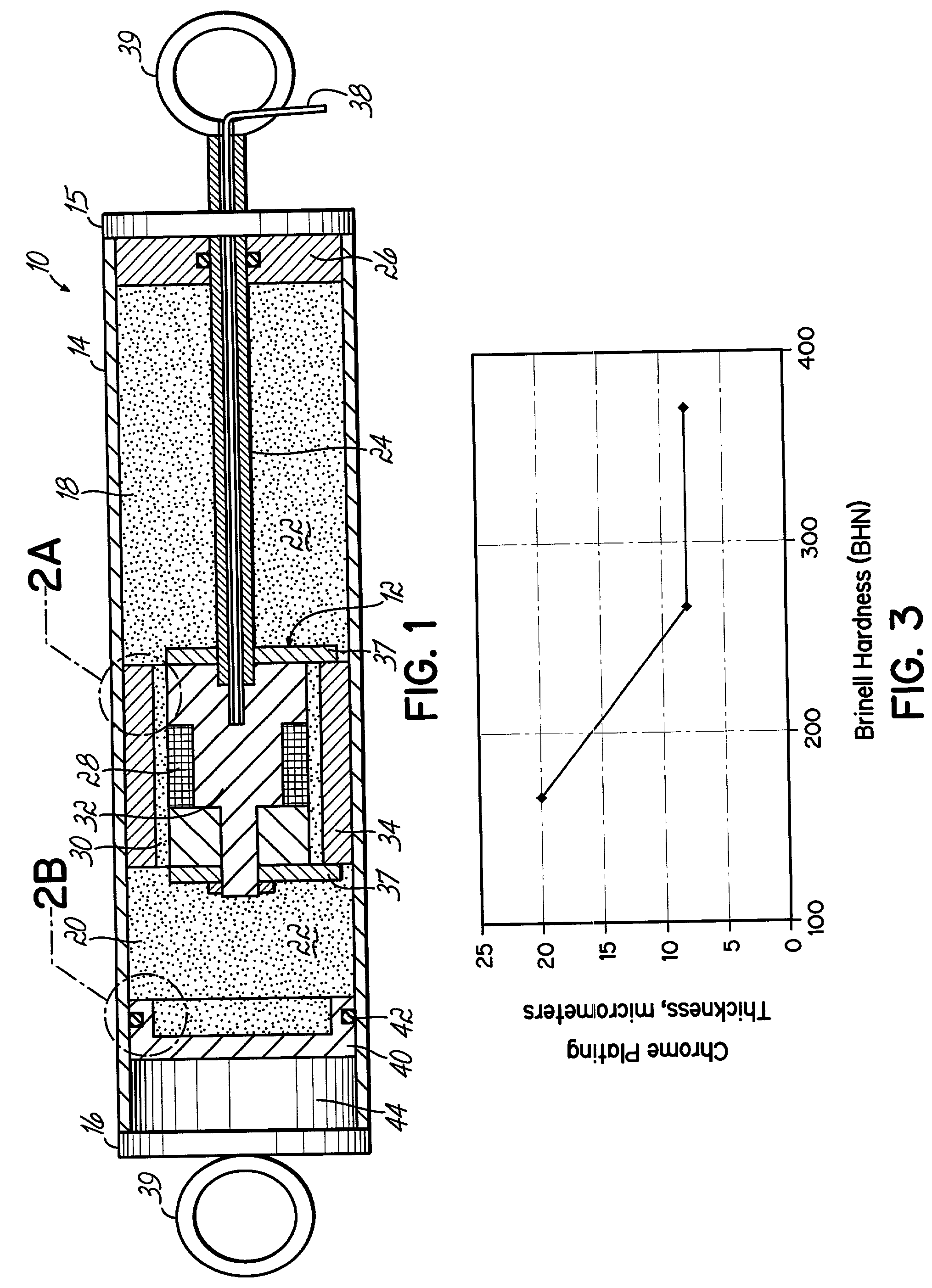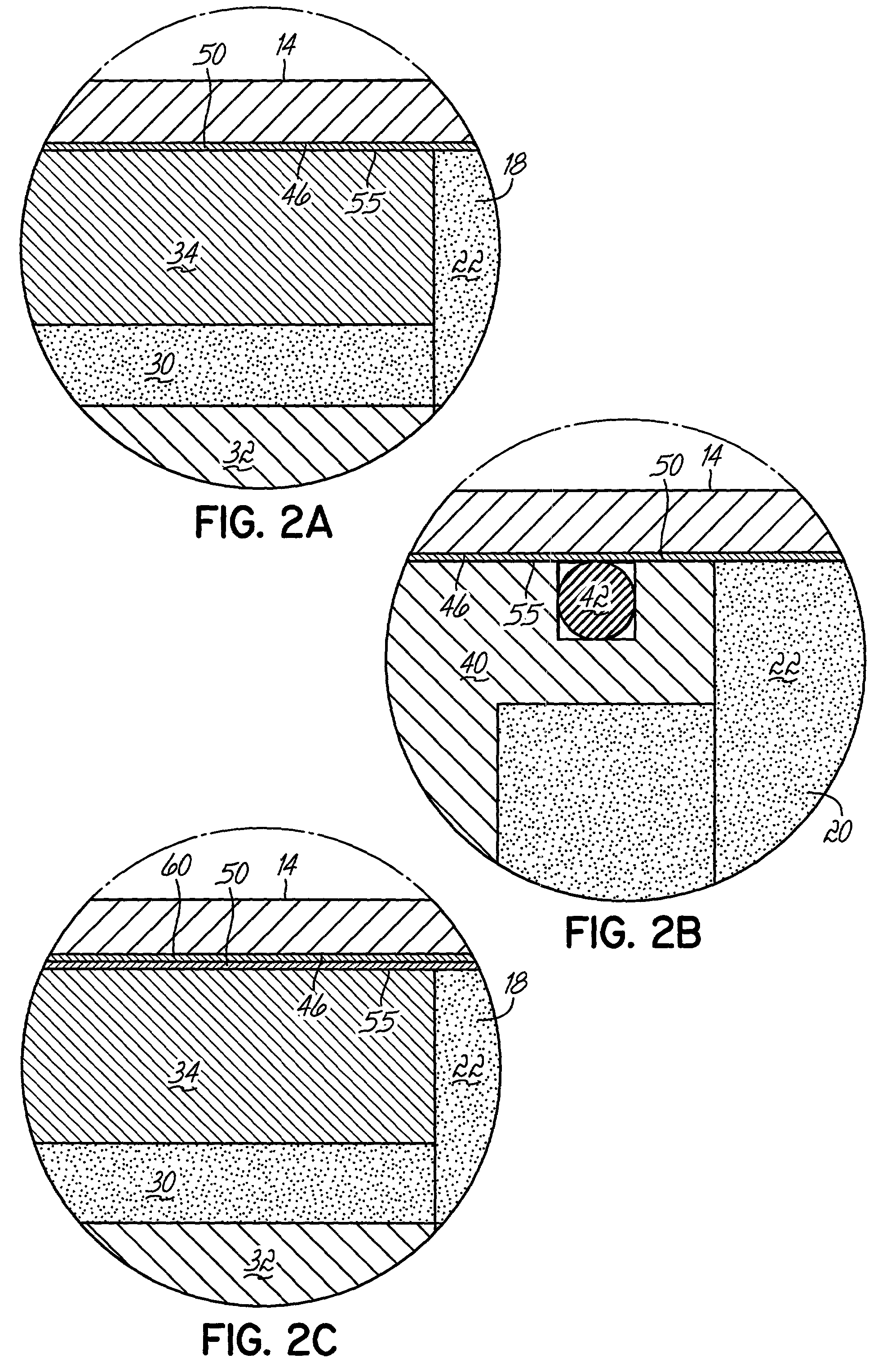Magnetorheological dampers with improved wear resistance
a technology of magnetorheological dampers and dampers, applied in the manufacture of springs/dampers, shock absorbers, shock absorbers, etc., can solve the problems of affecting the wear resistance of dampers, the rate of material removal or wear rate is significantly more rapid, and the damage associated with high-stress abrasion is more severe. , to achieve the effect of improving the wear resistance of the damper body and improving the wear resistan
- Summary
- Abstract
- Description
- Claims
- Application Information
AI Technical Summary
Benefits of technology
Problems solved by technology
Method used
Image
Examples
example
[0043] Testing was performed with a 1{fraction (13 / 16)} inch outer diameter, 1 / 2 inch long reciprocating piston made from nickel plated steel sliding on a 25 .mu.m thick chrome layer over 180 BHN steel. In accordance with the present invention, the threshold minimum thickness (t.sub.m) of the chrome layer on a 180 BNN steel is 17.9 .mu.m. Thus, the chrome layer is 7.1 .mu.m thicker than the minimum thickness required for low stress abrasive wear. Under a load of 120 N, the service life was greater than 6 million cycles with negligible wear of less than 3 .mu.m. Under a load of 240 N, the service life was greater than 4 million cycles with wear less than 8 .mu.m.
[0044] By comparison, testing was performed using the same reciprocating piston, but sliding on a 12 .mu.m thick chrome layer over 180 BHN steel. Thus, the chrome layer thickness is less than the determined threshold minimum thickness under a load of 120 N, the service life was less than 1 million cycles with the chrome layer...
PUM
 Login to View More
Login to View More Abstract
Description
Claims
Application Information
 Login to View More
Login to View More - R&D
- Intellectual Property
- Life Sciences
- Materials
- Tech Scout
- Unparalleled Data Quality
- Higher Quality Content
- 60% Fewer Hallucinations
Browse by: Latest US Patents, China's latest patents, Technical Efficacy Thesaurus, Application Domain, Technology Topic, Popular Technical Reports.
© 2025 PatSnap. All rights reserved.Legal|Privacy policy|Modern Slavery Act Transparency Statement|Sitemap|About US| Contact US: help@patsnap.com



